23 Types of Trees in New Jersey (With Pictures)
-

- Last updated:
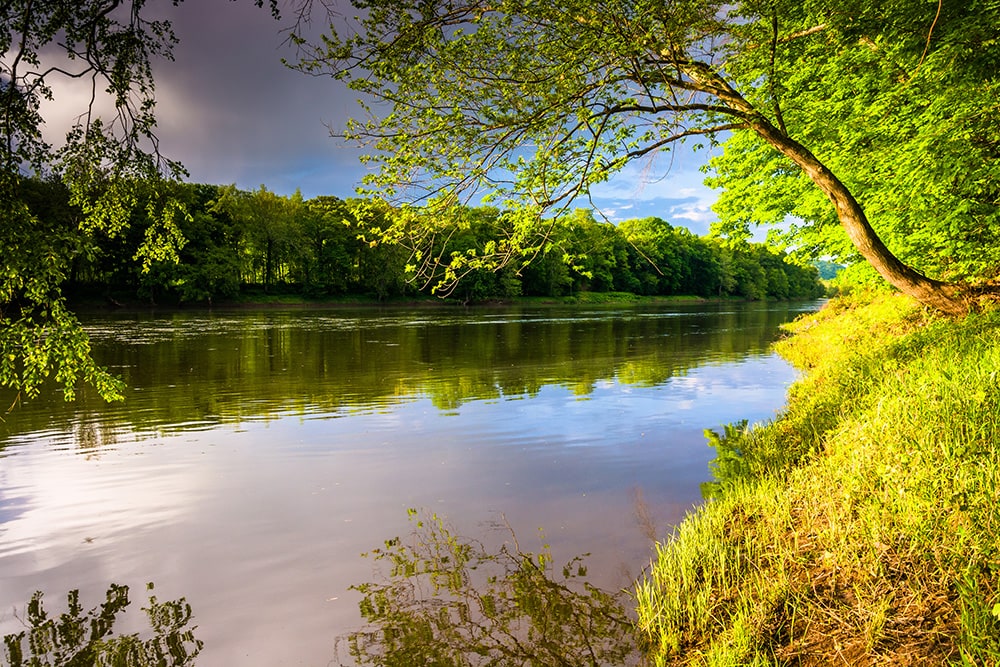
There are dozens of species of trees that are native to New Jersey. Native trees have adapted to the area where they live, which means they usually require less watering and less care than other non-native tree species. They also provide a natural habitat for wildlife that is native to the area, enabling you to promote a good local ecology. Below are 23 of the most common trees that are native to New Jersey.

The 23 Types of Trees in New Jersey
1. American Beech

| Scientific name: | Fagus grandifolia |
| Height: | 120 feet |
The American Beech is a large tree that can grow to heights of 120 feet. It is a strong and sizable tree that has long branches and produces beechnuts that are edible and are enjoyed by lots of different birds and other wildlife. Leaves are dark green, and the bark retains carving and damage almost indefinitely.
2. American Elm

| Scientific name: | Ulmus americana |
| Height: | 100 feet |
The American Elm is a deciduous tree that can grow up to 100 feet tall and, in some older trees, have a diameter of 6 feet. It is considered a large and elegant tree but while it was once commonly found across the state, Dutch elm disease has decimated its numbers today. The American Elm can grow in sun or partial shade and prefers moist soil.
3. American Holly

| Scientific name: | Ilex opaca |
| Height: | 60 feet |
The American Holly is a Christmas favorite, being used to make festive decorations. It has dark green leaves, which are pointed at the end, and red berries, with a light gray bark. In order to get berries, you need both a male and a female holly and this is a slow-growing tree with wood that is sometimes used in furniture making and woodworking. It prefers moist soil and is tolerant of hot and cold weather.
4. American Linden

| Scientific name: | Tilia americana |
| Height: | 80 feet |
The wide-spreading American Linden is a medium-height tree that can grow as high as 80 feet but will usually stop at approximately 60 feet. Sometimes referred to as the bee tree, the American Linden can attract a lot of bees when flowering, and those bees that do feast on the American Linden’s flowers tend to produce strong honey. The tree benefits from dry or moist soil and it is a reasonably fast grower, but it can be blighted by insects that feed on its foliage.
5. Bald Cypress

| Scientific name: | Taxodium distichum |
| Height: | 75 feet |
The bald cypress conifer has leaves that resemble feathers and turn an attractive copper color when falling. The tree is popular for construction because of its resistance to decay. It can grow to 75 feet tall, enjoys moist soil, and is tolerant of cold weather. It is commonly seen in parking lots and other paved or covered areas because its roots will not easily suffocate under a covered surface.
6. Bigtooth Aspen

| Scientific name: | Populus grandidentata |
| Height: | 75 feet |
The bigtooth aspen is named for the shape of its leaves, which have large teeth around their edges. It grows to a height of around 75 feet tall and its parts are consumed by wildlife. The tree benefits from moist, acidic soil, and it does require lots of sunlight to enjoy the best possible growth. In fact, the bigtooth aspen will not grow well in the shade and, while it will grow in most soil conditions, it is prone to disease and rarely lives long.
7. Black Ash

| Scientific name: | Fraxinus nigra |
| Height: | 70 feet |
The black ash is different from white ash not only in the color of its heartwood but also because its branches stretch up rather than down. It is sometimes used to make baskets and other items and, in terms of growth, it prefers moist or wet soil but can grow in sun or shade. It is a fast-growing tree, but care needs to be taken to try and avoid diseases and pests that are the plague of most types of ash trees.
8. Black Cherry
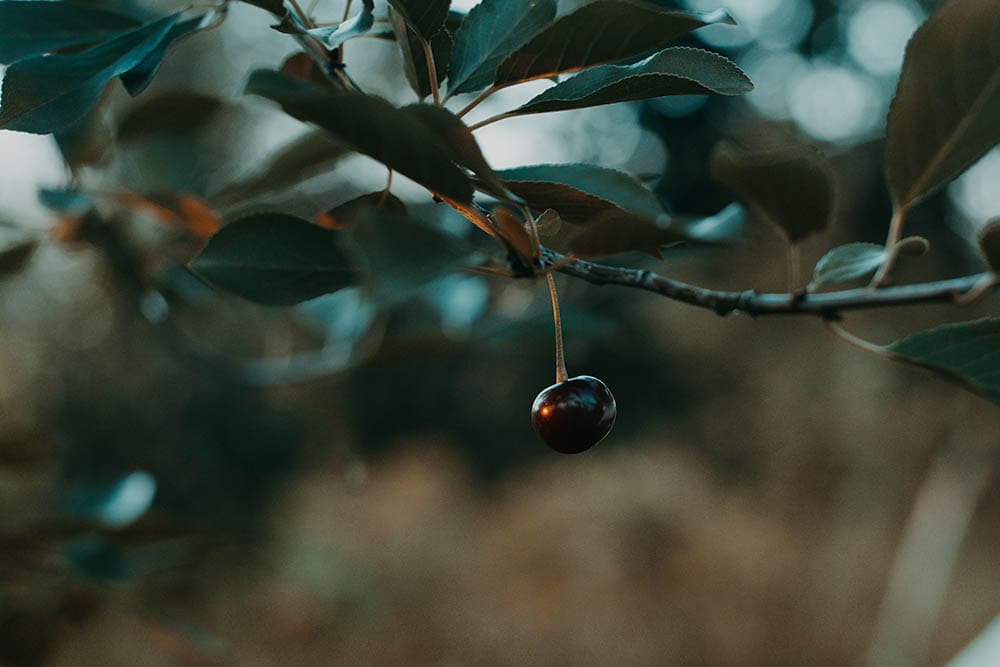
| Scientific name: | Prunus serotina |
| Height: | 100 feet |
The black cherry, which is also often called the rum cherry or wild black cherry, is a member of the rose family. The tree can smell a lot like cherry, hence its name, and the wood is highly sought after for furniture making and for making toys. It is also used to make cough tinctures and other medicines. The black cherry can grow to 100 feet or taller, although it depends on the exact species, and it prefers dry to moist soil and sun or shade.
9. Black Spruce

| Scientific name: | Picea mariana |
| Height: | 100 feet |
The black spruce is a tall, narrow growing spruce tree that typically grows to around 60 feet but can grow taller and potentially reach heights of 100 feet or more. Because it is a relatively small spruce, it is not widely used in construction or woodworking, but it will grow in sun or shade and prefers wet soil.
10. Black Willow

| Scientific name: | Salix nigra |
| Height: | 70 feet |
The black willow is a type of willow tree that is sometimes referred to as swamp willow because it is commonly found along streams and in other sources of wet soil. They can naturally prevent flooding because they act to prevent soil banks from sliding into streams. Its weak structural strength means that it is rarely used in construction or woodworking, but the tree grows well in sun or shade, although it does require wet soil to flourish, and the young stems are flexible enough that they are good for basketry and weaving.
11. Common Horse Chestnut

| Scientific name: | Aesculus hippocastanum |
| Height: | 80 feet |
The common horse chestnut can grow to 80 feet tall and is most commonly grown as an ornamental tree because of its attractive fruit and foliage. All parts of the tree are poisonous and should not be consumed. Its fruit can be appealing to children and livestock, but even a small amount of the tree can prove fatal. Despite this, the bark was once used medicinally. It can grow in sun or shade and prefers rich soil
12. Flowering Dogwood
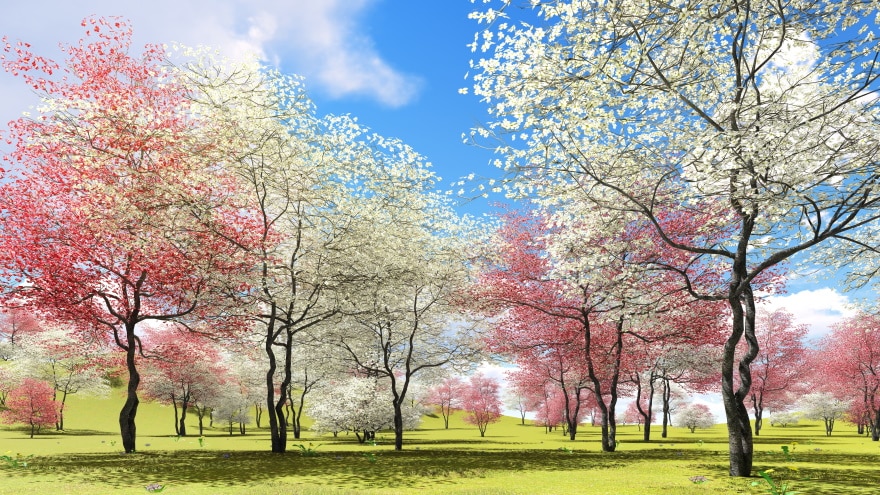
| Scientific name: | Cornus florida |
| Height: | 35 feet |
The flowering dogwood is an attractive, ornamental tree that can flower between late winter and late spring depending on its range. It prefers shade to sun and grows well along riverbanks and in wet soil especially. The tree has been used medicinally for hundreds of years and the shock-resistance of the wood means that it is useful for making mallet heads and similar items.
13. Gray Birch

| Scientific name: | Betula populifolia |
| Height: | 70 feet |
The gray birch is a member of the birch family that tends to grow small and bushy. Its branches will reach almost to the ground and its white bark darkens with age. The gray birch is a fast-growing tree but it doesn’t live long. In the wild, it protects the seeds and young of larger forest trees and it can survive and grow in most soil and lighting conditions, making it a popular choice in gardens and land.
14. Hazel Alder

| Scientific name: | Alnus serrulata |
| Height: | 35 feet |
The hazel alder tends to be more of a shrub than a tree, growing from multiple trunks and offering attractive purple catkins. This tree can grow to 35 feet and likes moist water so does well around water sources like lakes and rivers. It survives floods well, but its wood is weak so rarely used for construction or woodworking.
15. Hickory

| Scientific name: | Carya tomentosa |
| Height: | 100 feet |
The mockernut hickory is a large tree that can grow to heights of 100 feet if given moist soil and planted in partial shade. Although the tree is slow to grow, it lives for a long time, and its strong, attractive wood is highly sought after for making furniture, flooring, and other decorative items. Hickory wood is also popular for smoking foods and is typically used for smoking ham.
16. Mountain Laurel
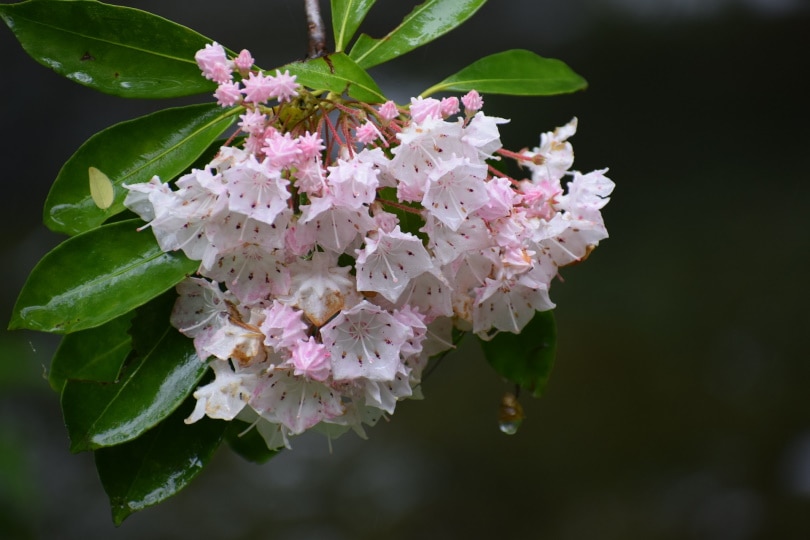
| Scientific name: | Kalmia latifolia |
| Height: | 30 feet |
The mountain laurel usually grows as a bush with a height of up to 20 feet but can occasionally grow larger and with a single trunk, making it a small tree. It has attractive flowers that grow in large quantities and, as a shrub, it is commonly grown in parks while also being popular as an attractive means of filling space in gardens. All parts of the mountain laurel are toxic.
17. Pitch Pine

| Scientific name: | Pinus rigida |
| Height: | 70 feet |
The pitch pine is an evergreen tree that can grow to heights of 70 feet. Its brown bark will turn black as it ages and is the main species found in the pine barrens. The tree gets its name from the high level of resin found in the wood, which saw it used to make torches and to make tar and turpentine. It needs sun to develop and prefers dry soil, being fire resistant and capable of growing in soil that most other trees struggle with.
18. Red Oak
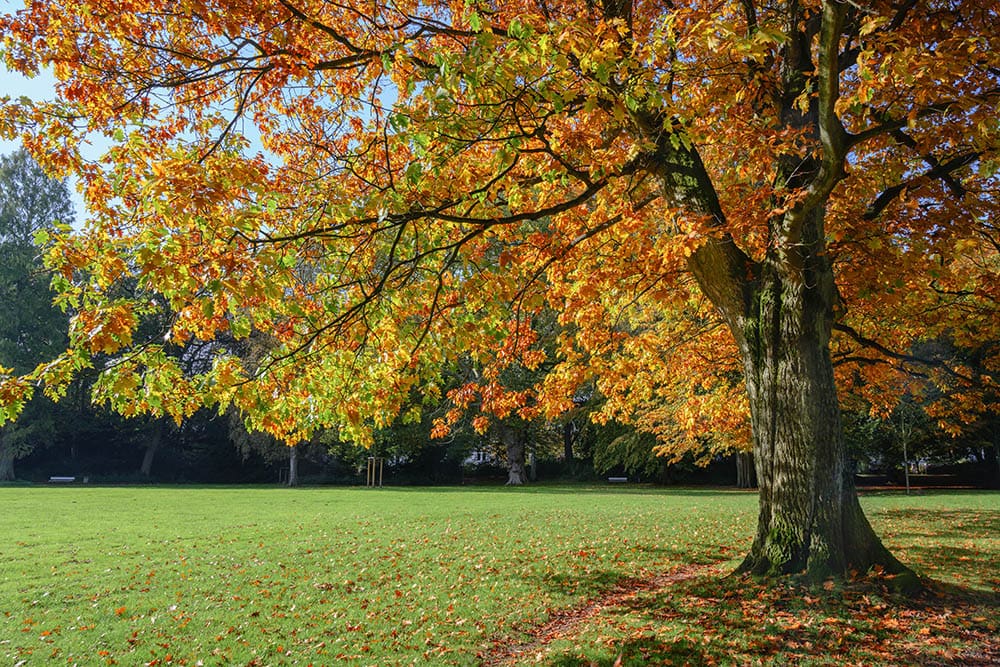
| Scientific name: | Quercus rubra |
| Height: | 100 feet |
The red oak, or northern red oak, often reaches heights of 100 feet and can grow to 120 feet in ideal conditions. Its straight trunk has dark bark, and the tree is often found lining streets. It is a fast-growing oak and its lumber is very popular for making flooring, furniture, and other wooden items. The tree survives well in cities and can survive the cold, preferring sun and dry soil but also surviving partial shade and moist soil.
19. Sweet Birch

| Scientific name: | Betula lenta |
| Height: | 75 feet |
The sweet birch, also known as the cherry birch, black birch, and mahogany birch, has cherry-like bark and the oil of the tree is used to add flavor to items like candy and medicines. It grows well in shade and prefers dry soil but can tolerate some moisture.
20. Tulip Tree

| Scientific name: | Liriodendron tulipifera |
| Height: | 150 feet |
The tulip tree is a giant tree that can grow to heights of 150 feet and its softwood, which was once used to make canoes, is popular with woodworkers because it is easy to work with and lightweight. It is used in cabinetry and furniture making. The tree grows in most soil and can survive in sun or shaded areas. It is a very fast-growing tree that is popular with birds and other wildlife.
21. Walnut

| Scientific name: | Juglans nigra |
| Height: | 75 feet |
The American black walnut tree can reach heights of up to 150 feet, although more commonly reaches 70–75 feet. It has very dark bark and the hardwood is very popular for making furniture and other items, although it is difficult to find and expensive to buy. The black walnuts are edible, but the close proximity of this tree can kill tomatoes and some other edibles. It grows well in sun or shade and requires moist soil to thrive.
22. White Oak

| Scientific name: | Quercus alba |
| Height: | 100 feet |
The white oak has a light gray bark and its acorns are popular with birds and other wildlife. White oak timber is popular for flooring and furniture making, although red oak is taking its place. White oak can grow in shade but prefers sunny spots and can grow in dry or moist soil. Although acorns are edible, the tannins need to be effectively removed first or they can cause mild toxicity.
23. Yellow Birch

| Scientific name: | Betula alleghaniensis |
| Height: | 100 feet |
The yellow birch is a large birch tree species that gets its name from the yellow bark. It can grow to heights of 100 feet, although 50–70 feet is a more common size. The tree prefers cooler climates and enjoys shade, as well as moist soil. Its lumber is very popular with craftsmen and in construction.

Conclusion
Above are 23 of the most common trees in New Jersey, including those that are typically grown for ornamental purposes and some that are grown for their high-quality lumber. Because these trees are native to the area, they should be easier to care for and require less attention than non-native trees, as they are known to grow well in the climate and other conditions of the area.
Featured Image Credit: Jon Bilous, Shutterstock
Contents
